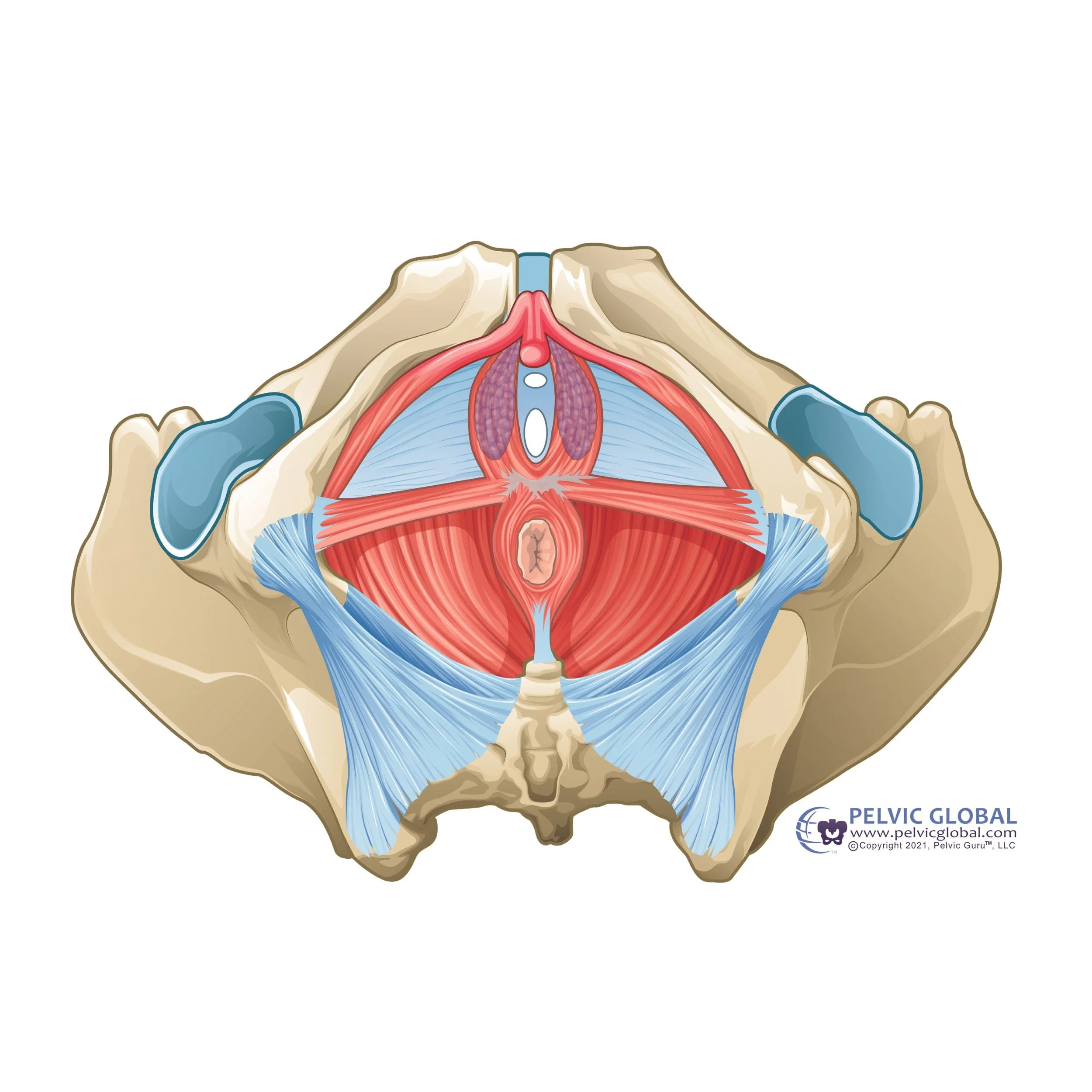Pelvic Health - What Is This Buzz All About?
Maybe you’ve seen “Pelvic Health” in an Instagram infographic, your pregnancy class mentioned its role in birth, or you saw an ad at your local rehab clinic. It’s also possible you’re hearing about it now for the first time. The pelvic floor has gained attention in the media's eye, and thankfully in some doctor’s offices. For the longest time it’s gotten hardly any attention at all, but at last it is now the latest “buzz” word. We all have a pelvic floor, but what the heck is it?
For starters…pelvic health may be “buzz” wordy right now. But it isn’t just this fad that’s “in style”. Don’t get me wrong, us pelvic health specialists love the increased attention that it has gotten! But don’t let that fool you with thinking it’s new or that it’s just this fad that will eventually fade away like custom ringtones or a TikTok dance. No, pelvic health is a crucial element to your wellbeing that has been around as long as the human body has existed and is here to stay. Exercising the pelvic muscles has been documented for over thousands of years. Thankfully, research and knowledge is always growing, as is our understanding of this vital area of the body.
So what is pelvic health??
You know when you sit down on the toilet, and your body relaxes as pee or poop starts to come out? That’s thanks to your pelvic floor!
You know when you have to pee but you’re able to walk to the bathroom without peeing your pants? That’s thanks to your pelvic floor!
You know when you’re feeling aroused and things look engorged or erect? That’s your pelvic floor!
Your pelvic health is an area of wellness focused around your pelvic region. This includes reproductive health, bowel health, sexual health, and bladder health. It’s a part of fertility, pregnancy, and post-partum. It’s impacted by any surgeries around the pelvic floor such as for hernias, prolapse, bottom surgeries, hysterectomies, and more. It’s the area involved when experiencing pain at the hips, genitals, low back, tailbone, butthole, etc.
Let’s take a deeper dive to where these muscles are.
They are a group of muscles in the pelvis.
Picture this.
Imagine a hammock. This hammock is hanging from 4 corners (like the shape of a diamond).
Side corners: If you are able and okay doing so, you can take your hand and put it under your butt while you sit down, feel for the bony part under each butt cheek. These are your sitz bones and where the sides of the pelvic floor attach.
Front corner: If you take your fingers below the center of your belly and walk your hands down, you’ll feel a bony area. This is your pubic symphysis. This is where the pelvic floor attaches in the front.
Back corner: Find your butt crack and the bony piece in the center, this is your tailbone. This is where the back of the pelvic floor attaches.
All in between these corners lay this hammock that is your pelvic floor.
Pictured left is an image showing the pelvic floor muscles with vulvar anatomy, as if you were looking up at the them from underneath.
Image used with permission from Pelvic Guru®, LLC as a member of the Global Pelvic Health Alliance Membership (GPHAM)
The pelvic floor does things like:
Provide Support - It supports the openings closer to your skin and the deeper layers support your organs sitting on top (bladder, bowels, and uterus)
Sphincteric Control- Opening and closing of the holes as we need them (example - closing where pee comes out to prevent leaking, but opening this hole to allow successful peeing when we want to).
Sexual Functioning - They’re involved in orgasm, arousal, and intercourse!
Provide Stability - Partnering with the core, these muscles provide stability for the pelvis and low back.
Sump Pump - They help pump blood and lymph back to the heart, similar to our calves.
They also are key players in our posture and breathing. Sounds like a lot of important roles to me!
If you’re curious about learning more, including signs of normal compared to not normal, and when to see a pelvic specialist, check out my Free Understanding Pelvic Wellness E-book. You can also explore the other resources available on my website. Your body (and your pelvis) will thank you!
Remember: this post is for informational purposes only and may not be the best fit for you and your personal situation. It shall not be construed as medical advice. The information and education provided here is not intended or implied to supplement or replace professional medical treatment, advice, and/or diagnosis. Always check with your own physician or medical professional before trying or implementing any information read here. 
